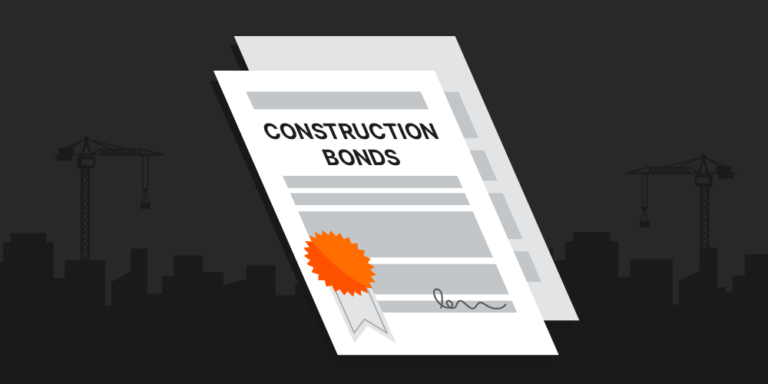— 8 min read
A Contractor’s Guide to Construction Bonds
Last Updated Jan 15, 2025
Dawn Killough
34 articles
Dawn Killough is a writer with over 20 years of experience in construction, having worked as a staff accountant, green building advisor, project assistant, and contract administrator. She holds a BA in Psychology and MS in Conflict Resolution, both from the University of Portland. She shares fundamental green building strategies and techniques in her book, Green Building Design 101. Dawn lives in Portland, Oregon.
Last Updated Jan 15, 2025

Many construction projects today require that contractors provide bonds. A construction bond is a form of protection for the owner against non-payment, lack of performance, company default, and warranty issues. Construction bonds are also known as contract bonds, because they guarantee that the bond holder will fulfill the terms of the contract. In this article, we examine the many types of bonds in the construction industry, and explain how each works. We’ll also look at the process to secure a bond and how to make a claim, if necessary.
Table of contents
How construction bonds work
Unlike insurance, which protects the insured party, a contractor typically purchases a bond to protect the project owner from financial loss. If a problem occurs, the owner can file a claim with the surety company, which will step in to ensure the contract is completed.
Once a bond claim is settled, the surety will recoup all expenses from the contractor who purchased the bond, according to the terms of the indemnity agreement between the parties.
Parties to a bond
There are three main parties to a bond:
- Principal
- Surety company
- Obligee
The principal is the person or company purchasing the bond. On most projects, this is usually the general contractor or a subcontractor.
The surety company provides the bond for the project. This is the party responsible for arranging for the completion of the contract if the contractor fails to perform.
The obligee is the party protected by the bond. This party is usually the property owner, public agency, or other party requiring the bond.
Why contractors need a bond
Generally, bonds are used on construction projects whenever the owner wants additional financial protection during a project. While the construction contract provides a certain level of protection, a breach of contract can be expensive and time-consuming to resolve in court.
Particularly with larger projects, the bond acts as an agreement between the contractor and project owner assuring the contractor will fulfill all the terms. Contract bonds are underwritten by the surety company based on their financial health, the type of work, backlogs, as well as their past job records.
Stay updated on what’s happening in construction.
Subscribe to Blueprint, Procore’s free construction newsletter, to get content from industry experts delivered straight to your inbox.

Public vs. private projects
Bonds are typically much more prevalent on government projects than they are on residential or commercial contracts. All government projects that fall under the Federal Miller Act or Little Miller Acts will require payment and performance bonds at a minimum. States and municipalities set their own thresholds for when bonds are required under “Little Miller Acts”.
Additionally, a project owner can require contractors or suppliers to provide surety bonds for any construction project, whether it is public or private.
Types of construction bonds
Performance bond
A performance bond guarantees that a contractor will perform the work according to the conditions and requirements of the construction contract. These bonds protect the owner from financial loss as a result of a contractor default.
Performance bonds also protect the owner from substandard work, or work that doesn’t meet the contract requirements. They are usually required on public projects, but are also sometimes required by owners on private projects as well.
The general contractor is typically the principal on a performance bond, with the owner as obligee. The project owner can make a claim against a performance bond if the work isn't being completed according to the contract requirements.
Payment bond
A payment bond protects the project owner from liens against the property by guaranteeing that the policyholder (typically the GC) will pay all subcontractors and suppliers for their work and materials. Payment bonds are required on most public projects, but are also frequently used on commercial jobs as well.
Payment bonds are designed to protect the owner, but they also extend benefits to subcontractors and suppliers. If the GC fails to make payment in a timely manner, subcontractors and suppliers can make a claim against the payment bond.
Bid bond
Bid bonds provide reassurance to a project owner that a contractor will follow through with their commitment to complete the job they are bidding on, and will provide a final bond backed by a surety company after the project award. The bid bond assures the project owner that the principal has the capability to complete the job as bid.
Like performance and payment bonds, these bonds are made out to the project owner and are provided by the general contractor as principal. If a claim needs to be made, the owner is responsible for notifying the surety company.
Maintenance bond & warranty bond
Maintenance or warranty bonds guarantee the project owner or a local jurisdiction that there will be no faults or defects in a certain improvement for a certain length of time. These bonds are often required when doing work on public infrastructure, such as sewer lines, storm pipes, or water mains.
If repair or replacement is needed within the time frame set by the jurisdiction and the contractor does not complete the work, then the jurisdiction will file a claim with the bonding company for any expenses they incurred.
Mechanics lien bond
A mechanics lien bond is used after a contractor or supplier has filed a mechanics lien on the property. They may also be called lien release bonds or discharge of mechanics lien bonds. They are used in the process of bonding off a mechanics lien. A mechanics lien bond removes the mechanics lien claim from the property itself, and attaches it to the bond instead.
Subdivision bond
Subdivision bonds guarantee that a developer or contractor will make improvements to the land in a subdivision as per its agreement with the local jurisdiction. Improvements can include things like sidewalk maintenance, electrical upgrades, or grading changes.
The jurisdiction sets the bond amount and how soon the work needs to be completed. If a claim needs to be made, the jurisdiction would be the one filing a claim.
Supply bond
Supply bonds ensure that building supplies or materials will be provided to a project. The supplier provides this bond to the GC or owner, and it protects them from default by the supplier. These types of bonds are often required on public projects, or on very large projects that require large amounts of materials.
Completion bond
Completion bonds provide assurance for the project owner that the project will be completed on-time, within budget, and free of liens. They differ from performance bonds because they cover the completion of the project as a whole, not just a specific contract. Both completion and performance bonds can be required on the same project. The project owner is responsible for making a claim if the project is not completed correctly.
Retention bond
Retention bonds replace the withholding of retainage on a construction project during the project or after completion, guaranteeing that all work will be completed at the end of the project. For example, a subcontractor may be able to offer a retention bond to the general contractor in exchange for a payout of the retained funds. A retention bond can enable a contractor to get their full progress payment in each period, without having to wait for retainage after the project is complete.
Depending on the cost of the bond, it may be a significant savings for a contractor over the life of a project. The project owner is responsible for making any claims for work that wasn’t completed.
Free e-book
The Keys to Success in Commercial Construction
Learn the financial strategies and business practices that lead to positive cash flow and long-term growth.

Securing a construction bond
When your company needs to purchase a bond, the first place you should start is with a reputable surety broker. A surety broker will advise you on the best way to submit your program requirements to a surety company to ensure you will receive the best terms and conditions.
Risk assessment
When working with a surety broker, you will need to provide documentation so the surety companies can assess how risky you are. These documents may include financial statements, work in progress (WIP) reports, organizational structure information, and other documents. These will be analyzed by your broker and submitted to the surety companies that would be the best fit for your business.
The surety will assign an underwriter to evaluate several factors, including your financial situation, your capacity to do the work of the proposed project, and the status of your previous projects.
The surety company will propose terms and conditions based on your submission. If these terms and conditions are acceptable, the surety company will ask you to sign an indemnity agreement, guaranteeing that any losses or expenses will be reimbursed. They may also ask for personal indemnity or collateral, based on your financial and organizational strength.
Claims against a bond
If the work is not complete, the contractor defaults, or payments are not being made, a protected party can make a claim against the bond. After a claim is made, the surety company will investigate, contacting the principal to verify facts and amounts.
The surety may take one of several actions to settle a bond claim. In the event of a performance bond claim, the surety may hire a new general contractor to complete the contract, or pay the obligee for any damages they incurred. A payment bond claim may result in the surety issuing a payment to a subcontractor who wasn't paid according to their contract.
After a claim has been satisfied, the surety will then look to the principal for repayment of any losses or expenses, as documented in the indemnity agreement.
Was this article helpful?
Thank you for your submission.
97%
3%
You voted that this article was . Was this a mistake? If so, change your vote
Scroll less, learn more about construction.
Subscribe to The Blueprint, Procore’s construction newsletter, to get content from industry experts delivered straight to your inbox.
By clicking this button, you agree to our Privacy Notice and Terms of Service.
Thank you!
You’re signed up to receive The Blueprint newsletter from Procore. You can unsubscribe at any time.
Categories:
Bond Claims, Construction Bonds, Financial Management, Payment Bonds, Risk Management
Written by
Dawn Killough
34 articles
Dawn Killough is a writer with over 20 years of experience in construction, having worked as a staff accountant, green building advisor, project assistant, and contract administrator. She holds a BA in Psychology and MS in Conflict Resolution, both from the University of Portland. She shares fundamental green building strategies and techniques in her book, Green Building Design 101. Dawn lives in Portland, Oregon.
View profileExplore more helpful resources

How Construction Payment Bonds Work — and Why They Matter
From the smallest home renovation to the largest public works project, the world of construction is backstopped by one fundamental principle: Trust. Owners and public agencies must be able to...

Profit from Predictability: Construction Software as a Business Strategy
For general contractors, managing complex, multi-million-dollar projects, every project phase — from planning and budgeting to on-site execution — is an opportunity to lose time and money. Construction software is...

Defending Against Financial & Legal Risks on Megaprojects
The construction industry has seen marked growth in megaprojects. Some experts classify any project over $500 million as a megaproject, while others argue that the build needs to be $1...

Unlocking Project Intelligence: Moving from Raw Data to Actionable Insights
The construction industry faces a wide range of challenges, from ongoing labor shortages to frequent cost overruns. But some the biggest hurdles all stem from unpredictability. The general contractors (GCs)...
Free Tools
Calculators
Use our calculators to estimate the cost of construction materials for your next project.
Templates
Find a template to help you with your construction project tasks.
Material Price Tracker
Get the latest U.S. retail prices and view historical trends for common building materials.
Glossary
Explore key terms and phrases used in the industry.
